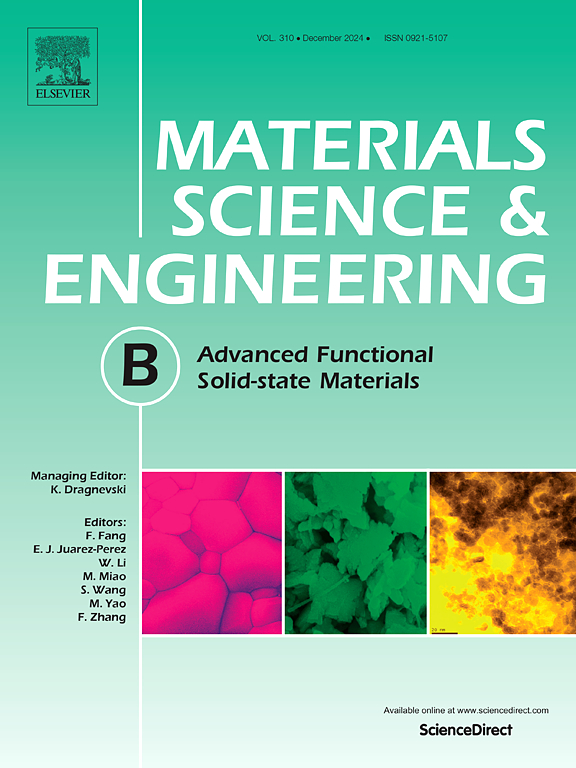First principles investigation of electronic, magnetic, optical, and mechanical properties halide double perovskites Cs2CuMoX6 (X = Cl, Br) for sustainable energy applications
IF 3.9
3区 材料科学
Q2 MATERIALS SCIENCE, MULTIDISCIPLINARY
引用次数: 0
Abstract
Structural, electronic, optical, and mechanical properties of Cs2CuMoX6 (X = Cl, Br) double perovskites were investigated with the aid of density functional theory (DFT) calculations. However, these materials have also proved to be promising candidates for lead-free perovskite solar cells as they can exhibit tunable electronic properties and are more stable. We find that Cs2CuMoX6 (X = Cl, Br) has favorable structural and thermodynamic stability based on tolerance factors of 0.96 for Cs2CuMoCl6 and 0.95 for Cs2CuMoBr6, and formation energies of −2.38 eV/atom for Cs2CuMoCl6 and −2.42 eV/atom for Cs2CuMoBr6. Electronic structure calculations show that Cs2CuMoCl6 and Cs2CuMoBr6 have indirect band gaps of 1.28 eV and 1.15 eV for solar light absorption, respectively. Cs2CuMoBr6 shows better light absorption in the 2.5–3.5 eV range and a higher refractive index, making it ideal for solar cells. On the other hand, Cs2CuMoCl6 has higher reflectivity at low energies and stronger absorption at higher energies, making it more suitable for reflective coatings and optical filters. Mechanical properties analysis suggests reasonable stability, but the brittle nature of these materials raises caution regarding the fabrication of devices. Additionally, the calculated elastic constants indicate that these materials are anisotropic in their mechanical behavior and may be affected by other mechanical stresses. Overall, our findings demonstrate the great potential of Cs2CuMoX6 double perovskite materials for sustainable energy applications, particularly for solar cells.
求助全文
约1分钟内获得全文
求助全文
来源期刊

Materials Science and Engineering: B
工程技术-材料科学:综合
CiteScore
5.60
自引率
2.80%
发文量
481
审稿时长
3.5 months
期刊介绍:
The journal provides an international medium for the publication of theoretical and experimental studies and reviews related to the electronic, electrochemical, ionic, magnetic, optical, and biosensing properties of solid state materials in bulk, thin film and particulate forms. Papers dealing with synthesis, processing, characterization, structure, physical properties and computational aspects of nano-crystalline, crystalline, amorphous and glassy forms of ceramics, semiconductors, layered insertion compounds, low-dimensional compounds and systems, fast-ion conductors, polymers and dielectrics are viewed as suitable for publication. Articles focused on nano-structured aspects of these advanced solid-state materials will also be considered suitable.
 求助内容:
求助内容: 应助结果提醒方式:
应助结果提醒方式:


